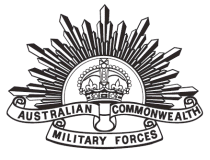
| Regimental number | 1974 |
| Place of birth | Denliquin, New South Wales |
| School | Superior Public School, New South Wales |
| Religion | Church of England |
| Occupation | Labourer |
| Address | Deniliquin, New South Wales |
| Marital status | Single |
| Age at embarkation | 22 |
| Next of kin | Father, Edward Turnbull, Deniliquin, New South Wales |
| Previous military service | Nil |
| Enlistment date | |
| Rank on enlistment | Private |
| Unit name | 23rd Battalion, 3rd Reinforcement |
| AWM Embarkation Roll number | 23/40/2 |
| Embarkation details | Unit embarked from Melbourne, Victoria, on board HMAT A68 Anchises on |
| Rank from Nominal Roll | Private |
| Unit from Nominal Roll | 23rd Battalion |
| Fate | Killed in Action |
| Place of death or wounding | Pozieres, Somme Sector, France |
| Age at death | 27 |
| Age at death from cemetery records | 27 |
| Place of burial | No known grave |
| Commemoration details | The Ypres (Menin Gate) Memorial (Panel 23), Belgium The Menin Gate Memorial (so named because the road led to the town of Menin) was constructed on the site of a gateway in the eastern walls of the old Flemish town of Ypres, Belgium, where hundreds of thousands of allied troops passed on their way to the front, the Ypres salient, the site from April 1915 to the end of the war of some of the fiercest fighting of the war. The Memorial was conceived as a monument to the 350,000 men of the British Empire who fought in the campaign. Inside the arch, on tablets of Portland stone, are inscribed the names of 56,000 men, including 6,178 Australians, who served in the Ypres campaign and who have no known grave. The opening of the Menin Gate Memorial on 24 July 1927 so moved the Australian artist Will Longstaff that he painted 'The Menin Gate at Midnight', which portrays a ghostly army of the dead marching past the Menin Gate. The painting now hangs in the Australian War Memorial, Canberra, at the entrance of which are two medieval stone lions presented to the Memorial by the City of Ypres in 1936. Since the 1930s, with the brief interval of the German occupation in the Second World War, the City of Ypres has conducted a ceremony at the Memorial at dusk each evening to commemorate those who died in the Ypres campaign. |
| Panel number, Roll of Honour, Australian War Memorial | 100 |
| Miscellaneous information from cemetery records | Parents: Edward Henry and Anne TURNBULL, Heriot Street, Deniliquin, New South Wales. Native of Deniliquin, New South Wales |
| Family/military connections | Brother: 6404 Pte Thomas William TURNBULL, 24th Bn, killed in action, 1 September 1918. |
| Other details |
War service: Egypt, Gallipoli, Western Front Found guilty, 9 October 1915, of being absent from guard duty after being duly warned by CO: awarded 168 hours' detention and forfeiture of 1 day's pay (total forfeiture: 8 days' pay). Taken on strength, 23rd Bn, Gallipoli, 25 October 1915. Admitted to hospital, 15 December 1915 (septic legs); transferred to HS 'Dunluce Castle', 23 December 1915, for transfer to Alexandria. Admitted to 21st General Hospital; discharged to 1st Australian General Hospital, Alexandria, 9 January 1916; to 1st Auxiliary Hospital, Heliopolis, 12 January 1916; discharged to duty, 17 February 1916. Admitted to No. 2 Australian General Hospital, Ghezireh, 25 February 1916 (influenza); transferred to 3rd Australian General Hospital, 26 February 1916; discharged to Overseas Base (date incorrectly recorded as 15 February 1916). Found guilty, 21 April 1916, of being absent without leave, from midnight, 21 April, to midnight, 23 April 1916: awarded 7 days' Field Punishment No. 2 and forfeiture of 9 days' pay. Found guilty, 5 May 1916, of being drunk whilst in detention, Canal Zone: awarded 28 days' Field Punishment No. 2. Proceeded from Alexandria to join the British Expeditionary Force, 30 May 1916. Admitted to 6th Australian Field Ambulance, 24 November 1916 (oedemia, feet); transferred to 36th Casualty Clearing Station, 25 November 1916; to 3rd Stationary Hospital, Rouen, 28 November 1916. Invalided to England, 2 December 1916, and admitted to Hurley Military Camp, 3 December 1916 (trench feet - slight); transferred to 3rd Auxiliary Hospital, Dartford, 16 January 1917. Granted furlough, 2-17 February 1917. Marched into No. 1 Command Depot, Perham Downs, 19 February 1917; to No. 4 Command Depot, Wareham, 21 February 1917. Found guilty, 1 March 1917, of being outside Camp without a pass: awarded 1 day's Field Punishment No. 2. Marched into No. 3 Command Depot, Hurdcott, 14 March 1917. Found guilty, 24 April 1917, of being absent from Tattoo Roll Call, 9.30-10 pm: awarded 3 days' confinement to Camp. Found guilty, 1 June 1917, of being absent without leave from 9 am, 30 May, to 6 am, 31 May 1917: awarded 4 days' Field Punishment No. 2 and forfeiture of 6 days' pay. Transferred to 66th Bn, Windmill Hill, 8 June 1917. Found guilty, 16 August 1917, of being absent without leave, 10 pm, 23 July, to 11 pm, 13 August 1917: admonished and awarded forfeiture of 22 days' pay. Proceeded overseas to France, 12 September 1917; rejoined 23rd Bn, 22 September 1917. Reported missing in action, Belgium, 9 October 1917; Court of Enquiry, 11 January 1918, confirmed fate as 'killed in action'. Medals: 1914-15 Star, British War Medal, Victory Medal |